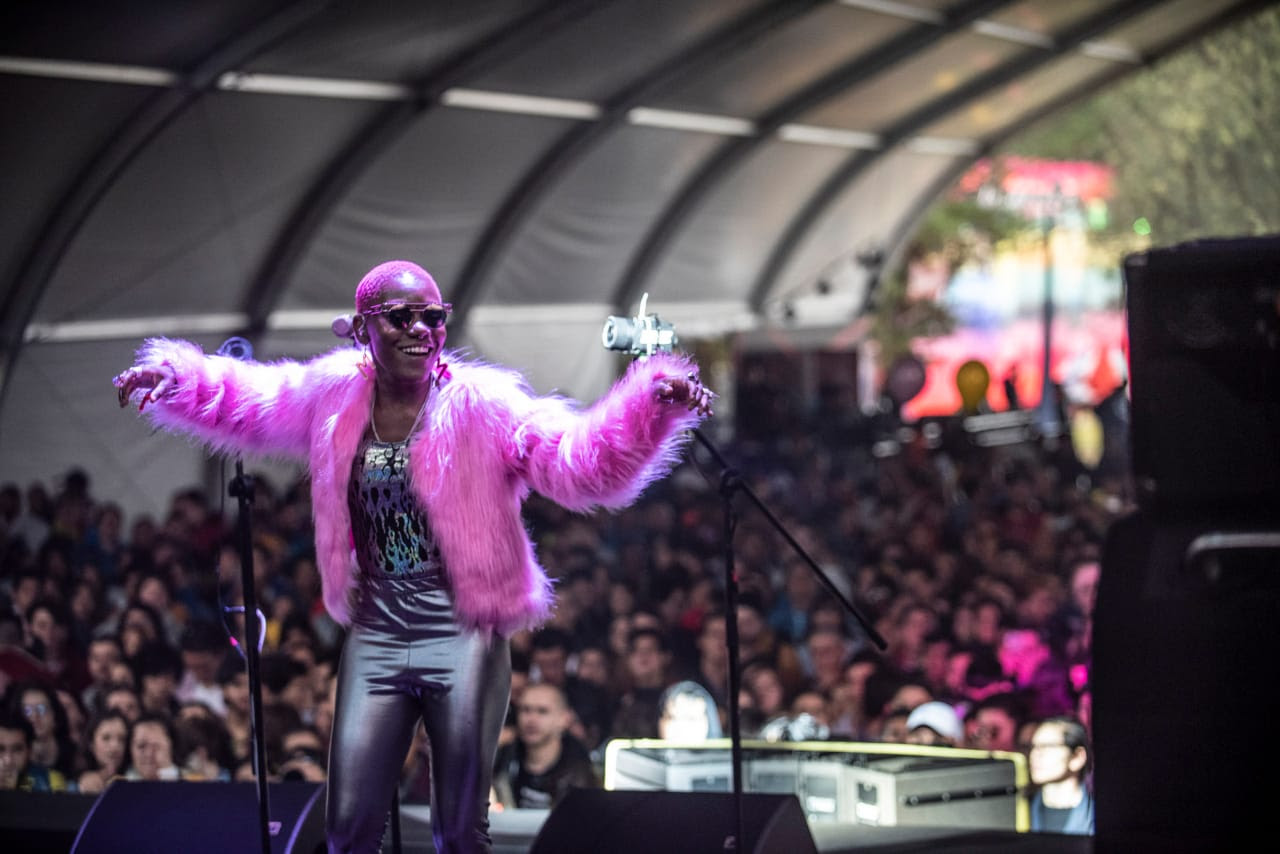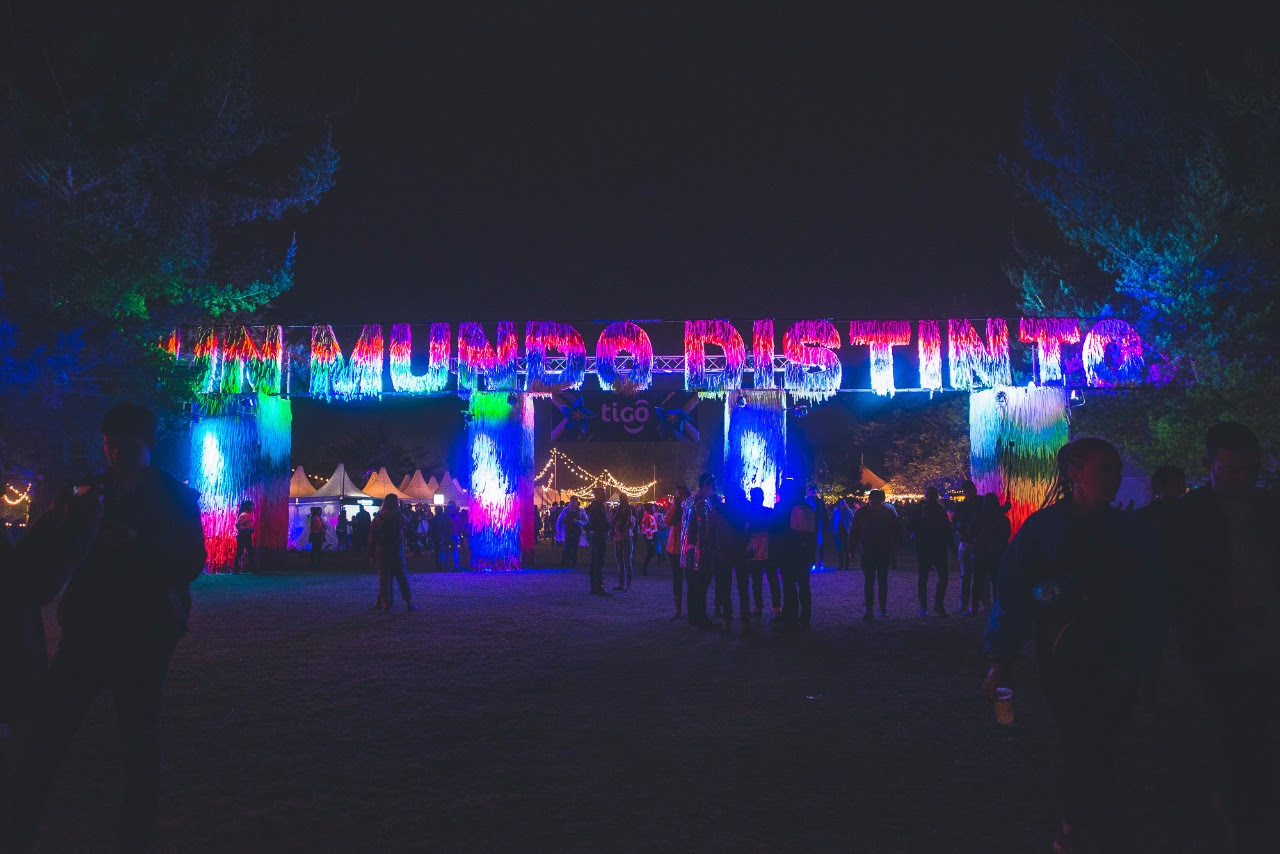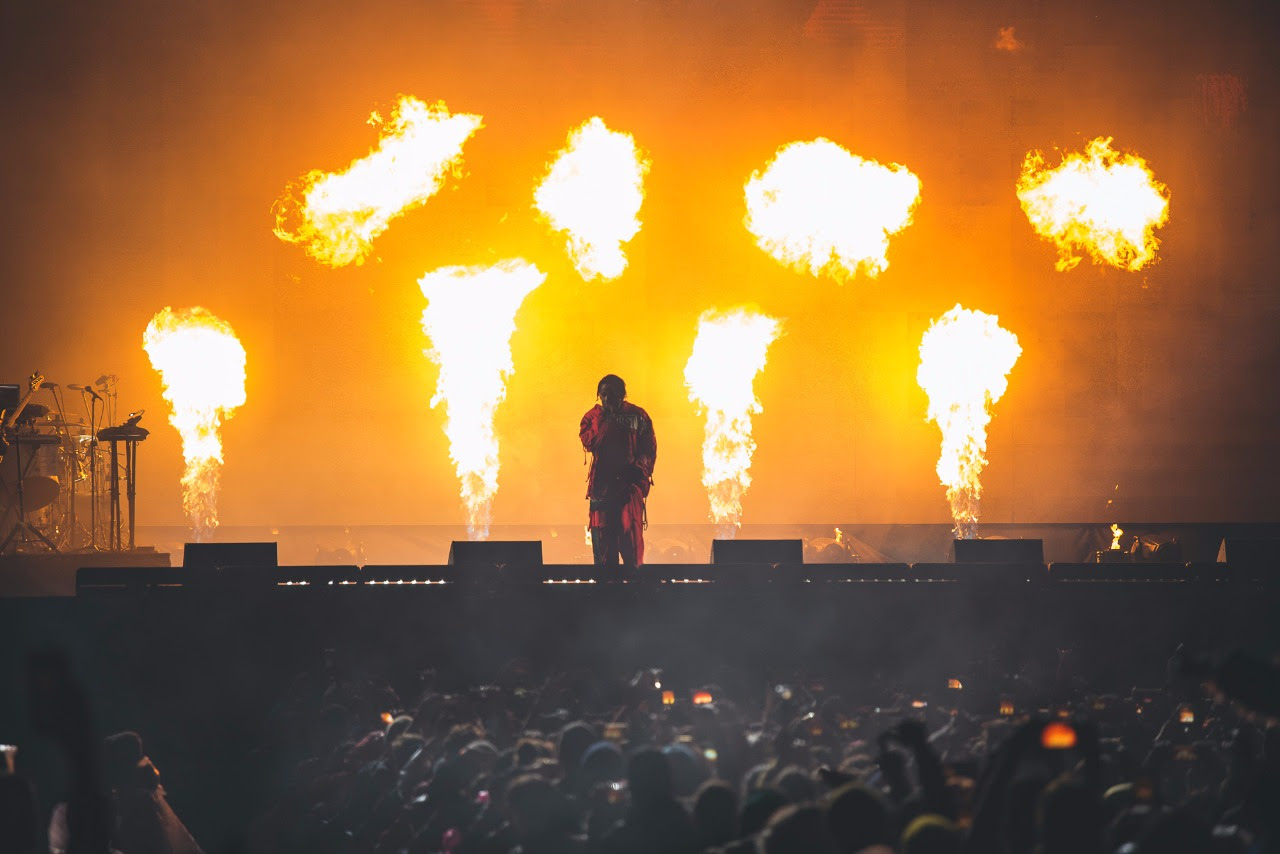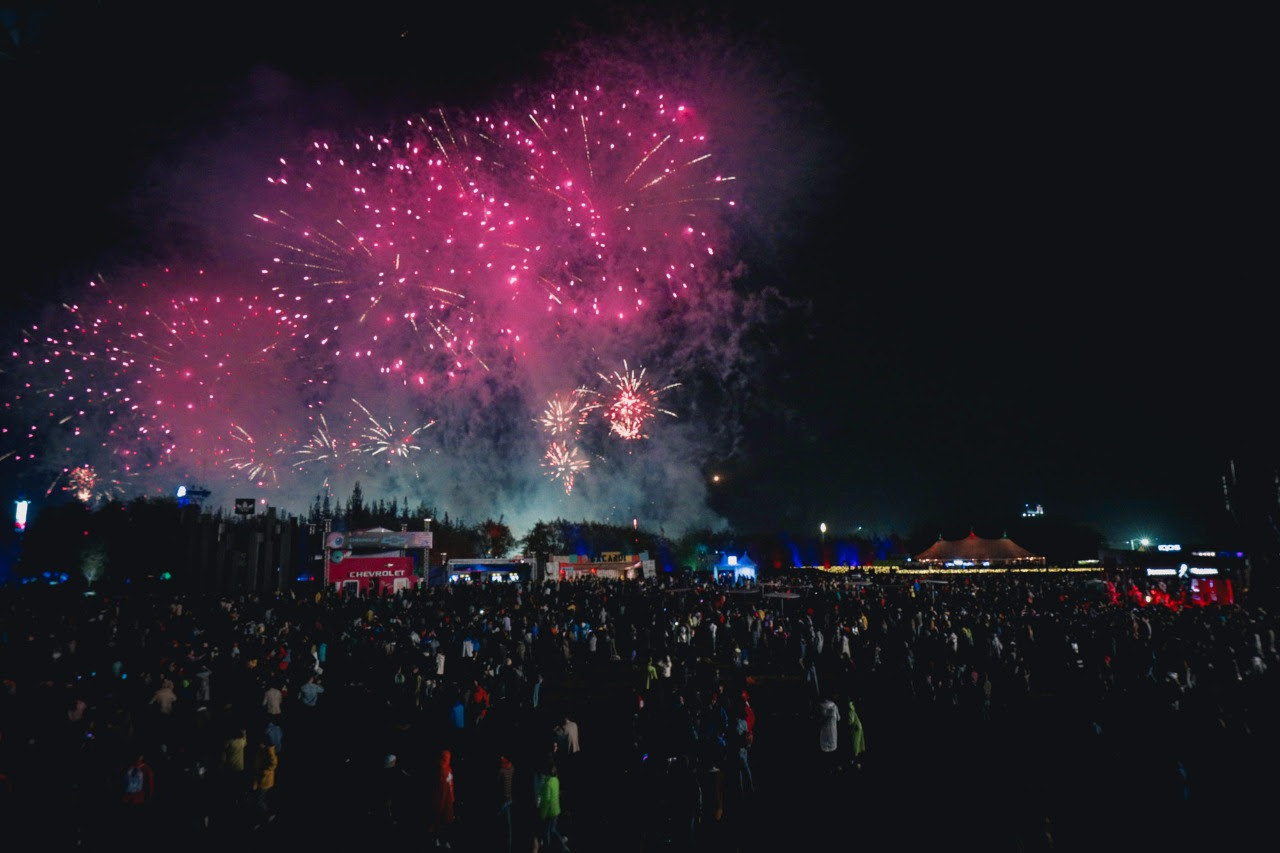In 2010, about 3,400 people came together for a modest one-day festival tucked along a few soccer fields in Zona F, near the northern region of Bogotá. The event had been months in the making, after a group of friends who knew each other from the city’s concert circuit decided to pool their efforts and create something as a team. The group — which consisted of Phillipe Siegenthaler, Gabriel García, Sergio Pabón, Santiago Vélez, Julián Martínez, Juan David Shool, and Julio Correal — put together a short lineup that included Bomba Estéreo, Matisyahu, and 2manydjs, among others. On April 24, the artists took the stage in the midst of a torrential downpour that no one seems to have forgotten years later. Despite the weather, a concert that had once felt like a pipe dream made its debut.
“It was outside and you had to walk down this narrow street that led into a social club, but the entire area was actually surrounded by one of the country’s biggest cemeteries, “ Siegenthaler remembers with a laugh. “It was small, and yet there was something coincidental and special about it, because we’d been dreaming about a private music festival in Bogotá for so many years.”
This was the earliest prototype of Festival Estéreo Picnic, which has gone from a fledgling mini-fest to a premier live music showcase in Latin America. Its rainy inauguration might not have looked very promising from the outside, but the few thousand in attendance quickly embraced the organizers’ vision. A video taken during that first year captures the intense enthusiasm of concertgoers and journalists, who felt they had just uncovered something special. They shared a similar refrain: “This is only going to be bigger next year.”

They were right — and that early support was critical to building Estéreo Picnic’s fanbase. The festival drew throngs of people in Colombia and in nearby parts of Latin America who were eager to see more alternative music acts; as time went by, attendees started flying in from all over the world.
“We were young people who identified as non-conformist and wanted a place to see our favorite bands.”
“We didn’t have much of an alternative music [scene] back then,” explains Pablon, referring to the musical community in Bogotá. “We were young people who identified as non-conformist and wanted a place to see our favorite bands. So we set out to change all of that.”
A decade later, on April 5, fans assembled for Estéreo Picnic’s latest iteration, held on the sprawling grounds of Briceño 18 Golf Course for the first time. Massive gray clouds hovered in the sky, occasionally spilling over with rain, making for a start wasn’t completely unlike that first day in 2010. In fact, braving Bogotá’s unpredictable weather has become a badge of honor synonymous with attending the festival. The Bogota Post once described Estéreo Picnic as wielding “an implicit element of survival – a marathon to be completed, fraught with the perils of rain, mud, and wet feet, but full of camaraderie and excellent music.”

What makes Estéreo Picnic different today, however, is just how much it has grown. The festival has ballooned into a massive, three-day bonanza, and by the end of this year’s celebration, an estimated 80,000 people made their way to the three ample stages, all set up over soft-blue, sweeping mountain views. The grounds had been laboriously decked out in fairy lights and flares to offer countless Instagrammable moments over neon glimmers and cascading tents. At night, Estéreo Picnic transforms into an electric explosion that rivals some of the biggest festivals in the U.S., with everything from carnival rides to a glowing picnic area surrounded with rows of dining options.
It’s not just the production value that’s evolved. The lineup has become bigger and more internationally focused as the festival has gained broader recognition, both in Latin America and worldwide. Artists who have hit the Estéreo Picnic stages include Calle 13, The Pixies, New Order, and Zoé. But despite boasting such a list of music luminaries, the festival’s path toward global recognition wasn’t easy. It took years for the founders to turn a profit, and the first attempts were fraught with difficulty. In 2016, co-founder Gabriel García spoke to local publication Dinero about the festival finances. Five years earlier, they lost an estimated $80,000 — and things weren’t much better in 2012, when they were in the red by $200,000. Things didn’t start changing until more than three years down the line, when organizers pulled names that lured in broader, general audiences.
“We’ve had a few versions that were pretty critical in the beginning,” explains Siegenthaler. “Early on, we kept growing the lineup and the attendance didn’t grow as much as the costs did. But especially in 2013, we had a huge twist of fate, because we were basically moribund at that point, and then we got The Killers. We also had Calle 13 and Los Caifanes, and all of that was a drastic change, and it played a giant role in the history of the festival.”

It has helped that Estéreo Picnic found support in government entities, who saw the festival as an expression of Bogotá’s culture of music. For the last seven years, the municipality has made efforts to bolster the music scene both at local and international levels by encouraging industry ventures, events, and free concerts that emphasize Bogotá’s traditions of live music. In 2012, the metropolis was recognized as one of UNESCO’s Cities of Music, in part due to its numerous festivals, of which there are now approximately 80 per year. Because Estéreo Picnic occurs early in the spring, it’s often seen as the kick-off that precedes the free, 24-year-old behemoth Rock Al Parque, a Colombian staple that occurs in June. The headway made by Estéreo Picnic also helped guarantee the success of independent music ventures like Hermoso Ruido, a citywide showcase of indie acts that has swollen with popularity in recent years.
“Estéreo Picnic was sort of among the first efforts to create a private festival in the city,” Siegenthaler explains. “I think it’s been an influence, and there’s been a better understanding of festivals that have grown since we started in 2010… Something like Rock Al Parque, which is a monster that’s been around 24 years, we saw as a reference point and a chance to respond with something different. It was an inspiration, but it has been structured in certain genres and is very specific to certain sounds, so we wanted to completely mix up the palette with a wide variety of colors and styles and genres.”
For its 10 -year anniversary, Estéreo Picnic assembled one of its biggest and most eclectic lineups yet, securing Kendrick Lamar, Grupo Niche, St. Vincent, Ximena Sariñana, Cuco, and Nicola Cruz. Even though the festival has grown to impressive new heights, the organizers have still had to navigate hiccups along the way. This year, they grappled with the unexpected death of Keith Flint, the lead singer of The Prodigy, who was slated to headline the festival. Flint passed away almost exactly one month before Estéreo Picnic, leaving a hole in the schedule that was filled at the final moment by the Brit rave pioneers Underworld. That promoters could get a pair of sexagenarians who rarely perform these days speaks to the festival’s ability to hook names fast.

Still, though Estéreo Picnic has snowballed into a curatorial feat, space remains for it to continue to evolve — particularly as the music industry and the idea of “alternative music” change. At an April 4 press conference in Bogotá, reporters asked organizers questions about the levels of representation in the festival’s lineup and plans to include more urbano sounds and reggaeton, at a time when those genres have seized the spotlight in the mainstream pop world.
“Even though we were so young when the festival first happened, the values are still the same and we’re chasing the same things.”
They shared that for them, staying up on music that reflects youth and counterculture remains one of the main tenets of the festival, even if the sounds that initiated the festival tend to skew toward rock. “If J Balvin ends up playing Estéreo Picnic, that’s more up to him than up to us, to be perfectly honest, and it would reflect the global scope of music that’s dominating countries, the festival circuits, and the youth, and we’d want to reflect that,” explains Siegenthaler.
Additionally, Estéreo Picnic was one of the events that the feminist music collective Ruidosa surveyed in 2017 when it found that only 10.6 percent of the artists who play at Latin American festivals are exclusively women. At the same press conference, organizers also explained that broader representation is a continued effort on their part.
Although the lineup may change, the central focus on highlighting both major and emerging underground acts and bringing them to Colombia remains. “Even though we were so young when the festival first happened, the values are still the same and we’re chasing the same things, just on a bigger scale,” said Pablon. “We keep asking ourselves, how can we encourage people to disconnect from their lives and enjoy the moment and create spaces of community and freedom where people can be happy? That’s the motor behind this thing so many years later.”







